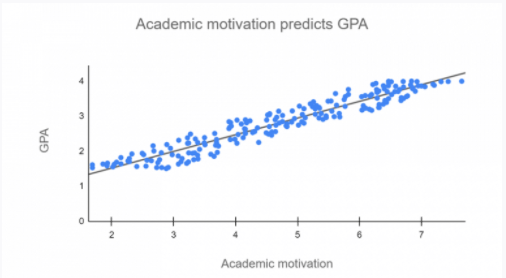What are Explanatory and Response Variables?

Experiments or observations are frequently used in research to uncover causal links between variables. You may, for instance, see if caffeine enhances reaction time by giving individuals varying caffeine dosages and evaluating their reaction times.
A response variable changes because of manipulating or observing variations in an explanatory variable.
Explanatory and response variables are frequently used interchangeably with other research terminologies.
|
Cause |
Effect |
|
Independent variable |
Dependent variable |
|
Predictor variable |
Outcome variable |
|
Explanatory variable |
Response variable |
The difference between explanatory and response variables
It’s easy to differentiate between explanatory and response variables:
- Explanatory variable: It is the intended cause that explains the outcomes.
- Response variable: It is the intended effect, and it reacts to explanatory factors.
Changes in the response variable are expected to occur only after changes in the explanatory variable.
There is a causal relationship between the components, either indirect or direct. For example, in an indirect relationship, an explanatory variable may act on a response variable with the help of a mediator.
There are no explanatory or response factors when working with a purely correlational connection. Even though changes in one variable are linked to another, a confounding variable might be the source of both.
Explanatory and response variables examples
In some types of research, there will be only one explanatory and the response variable; however, in complex studies, you may use numerous explanatory factors in a model to predict one or more response variables.
|
Research question |
Explanatory variables |
Response variables |
|
Is academic motivation linked to academic success? |
Academic motivation |
Test scores |
|
Can overconfidence and risk perception explain financial risk-taking behaviours? |
Risk perception Overconfidence |
Choices for investment |
|
Is the weather a factor in Covid-19 transmission? |
Climate Temperature Humidity |
Covid transmission rates |
The differences between explanatory and independent variables
Although explanatory and independent variables can be relatively similar, there are slight variations.
Independent variables in research are meant to be unaffected by or not reliant on any other variable; they’re solely modified or adjusted by researchers. Caffeine dose, for instance, is the independent variable in a controlled study where the exact amount of caffeine given to each participant can be determined.
However, since other factors frequently impact independent variables in real-world situations, the term “explanatory variable” can be favoured over “independent variable.” Therefore it is evident that they are not independent.
The difference between explanatory and independent variables: Example
You are looking into whether risk perception and gender might help explain or predict how people react to stress in various scenarios.
You assemble a group of young individuals and invite them to participate in a lab poll. They describe their risk assessments of various dangerous circumstances while you track their physiological stress responses.
You discover that gender and risk perception are substantially linked in your research. For example, women are more inclined than males to assess circumstances as risky.
It suggests that gender and risk perception are not mutually exclusive. Instead, they should be considered explanatory factors for the stress response variable.
In regression analysis, the phrases “explanatory variable” and “response variable” are frequently used to describe or forecast the changes in response variables due to explanatory factors.
How to visualise explanatory and response variables?
A graph is the most straightforward way to illustrate the connection between explanatory and response variables.
Traditionally, the explanatory variable is plotted on the horizontal axis, whereas the response variable is plotted on the vertical axis.
- A scatterplot or a line graph can be used when you have quantitative variables.
- A scatterplot or a line graph can be used in the case of categorical response variables.
- A bar graph can be used in the case of categorical explanatory variables.
You’ll gather paired data if you have one explanatory variable and one response variable. It means that each unit or participant’s response variable metric is connected to an explanatory variable value.
Example of explanatory and response variables visualisation
You’re looking to see if there’s a link between academic motivation and academic success among 100 college students.
- Initial academic motivation is your explanatory variable.
- Grades or GPA after the school year is your response variable.
Academic motivation is measured on an eight-point scale, with a GPA ranging from 0 to 4. You chart academic motivation on the horizontal axis and grades/GPA after the year on the vertical axis to see your statistics. Each data point represents one participant’s paired data, making for your explanatory and response variables.
A distinct explanatory association between academic motivation and GPA after the academic year can be seen in the scatterplot.
Frequently Asked Questions
What is an explanatory variable?
Ans. An explanatory variable is a type of variable that describes the results and their intended cause.
What is a response variable?
Ans. A response variable is a variable that reacts to other variables and has the desired impact.
Explain the difference between explanatory and independent variables?
Ans. Because in real-world circumstances, independent variables are often influenced by other factors, the terminology “explanatory variable” is sometimes preferred over “independent variable.” It implies that they aren’t self-sufficient.
Total Assignment Help
Incase, you are looking for an opportunity to work from home and earn big money. TotalAssignmenthelp Affiliate program is the best choice for you.
Do visit :https://www.totalassignmenthelp.com/affiliate-program for more details
Total Assignment help is an assignment help Online service available in 9 countries. Our local operations span across Australia, US, UK, South east Asia and the Middle East. With extensive experience in academic writing, Total assignment help has a strong track record delivering quality writing at a nominal price that meet the unique needs of students in our local markets.
We have specialized network of highly trained writers, who can provide best possible assignment help solution for all your needs. Next time you are looking for assignment help, make sure to give us a try.
Looking for Assignment Help from Top Experts ?
Get the best Assignment Help from leading experts from the field of academics with assured onetime, 100% plagiarism free and top Quality delivery.




